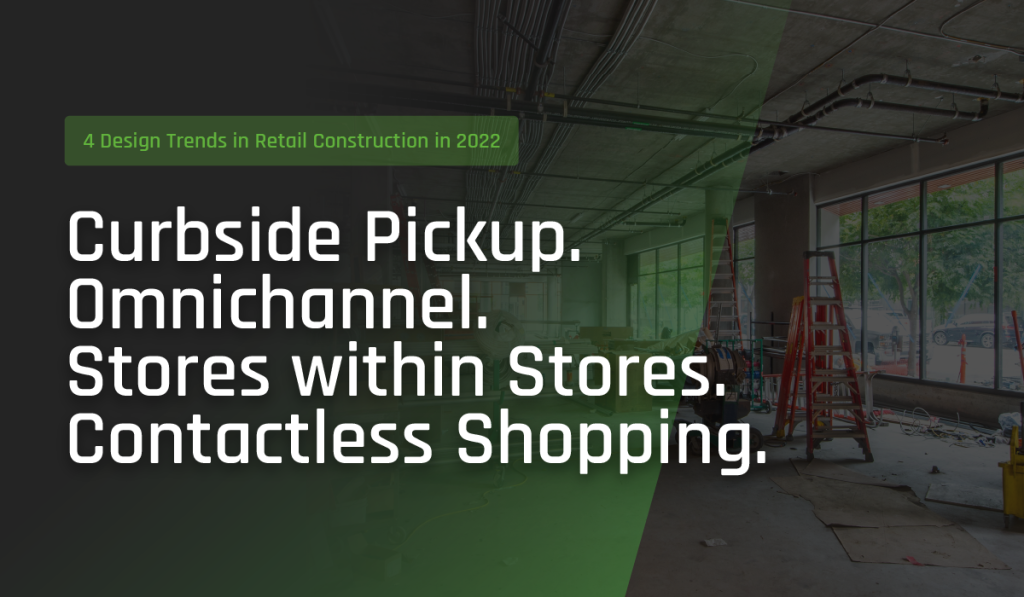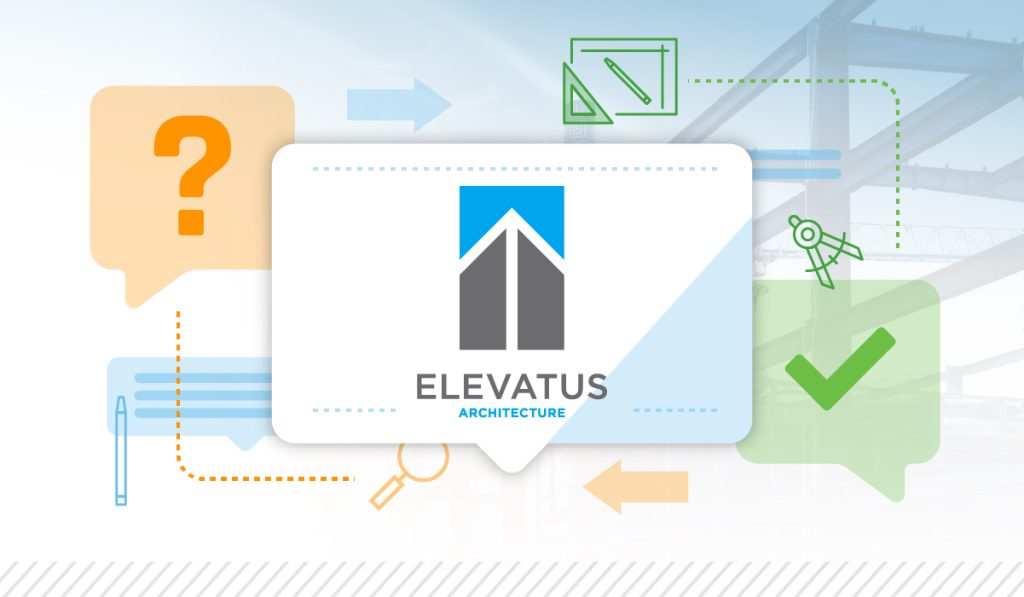
Retail Construction has experienced valleys and hills the past two years as a result of the pandemic. Shops and restaurants completely shuttered initially. New ones have now opened at an accelerated pace. One certainty has emerged. The shopping and dining experience has been redefined and transformed. Retailers have acted fast with new methods of engaging with customers. With consumers reluctant to visit brick-and-mortar stores, retailers leaned heavily on digital channels for sales and customer service. They also adopted new models of commerce that consumers perceived as safer and more convenient during the pandemic. Some changes required a small investment while others required larger store wide changes.
As mask mandates lift across the country, customers are returning to a reimagined retail landscape. People are more comfortable shopping in physical stores again. Now, retailers find themselves renovating existing stores and opening new ones to accommodate the influx of foot traffic.
This is good news for construction firms, especially those who specialize in retail build-outs. According to Statista, the projected value of new retail construction starts for 2022 is $19.64 billion. Many retail businesses closed during the pandemic. Today, however, for every one that closes, two more open.
Retail Construction Design
In 2022 and beyond, retailers will need to ensure their stores are designed to cater to consumer expectations and accommodate the new services customers have become accustomed to. Check out these 4 retail trends that will impact renovation in retail this year:
1. BOPIS and Curbside Pickup

In early 2021, 68.7% of retailers offered BOIPS (Buy Online, Pickup Instore), up from 54.0% in early 2020. 50.7% of the Top 1000 retail chains offered curbside pickup. These services continue to be popular with consumers today. However, not all retail locations are designed to accommodate these services. Early adopters erected makeshift BOIPS kiosks near the customer service desk and used cones and signs to section off portions of parking lots for curbside pickup. These tactics are not sustainable over the long term. Since these services are here to stay, retailers will need to restructure existing stores to build more permanent solutions and design new locations strategically to accommodate them. In addition to making space for curbside pickup locations, outdoor space will need to be restructured to accommodate delivery trucks and fulfillment operations for online orders delivered to consumers’ homes.
2. Omnichannel experience

McKinsey reports that 60-70% of consumers are shopping in an omnichannel way. Raydiant’s second annual State of Consumer Behavior Report found that 46% of respondents prefer to shop in person rather than online. Overall, e-commerce sales grew 14.2 percent in 2021. However, e-commerce sales decreased from 13.6% to 13.2% of total sales. Some shoppers begin their search for products online then complete their purchase in-store while others find products in stores then complete the purchase online. All shoppers expect a seamless experience throughout the buying journey. Look at returns for example. The National Retail Federation reports that the average rate of returns for online purchases was 20.8% in 2021. Customers often return online orders in store. Customer service desks in stores have expanded in many cases to accommodate longer lines of online shoppers returning purchased goods.
3. Stores within Stores

The majority of consumers (52%) say that convenience impacts more than half of their purchasing decisions. To capitalize on this trend, retailers are upping the ante by offering third-party services such as pharmaceutical and health services in their establishments. Large areas of stores such as Target, Costco and Walmart are now dedicated to these services. Customers can now more readily shop for food and other goods while waiting for prescriptions, glasses and contacts, or a doctor’s appointment. Another related trend is the appearance of pop-up stores (sometimes called flash retailing). Third-party retailers rent space in larger stores to sell their goods, enabling the large retailer to capitalize on a trend or seasonal demand. In fact, 32% of brands say they’ll be using pop-ups and in-person experiences in the next year. Incorporating these offerings in-store often requires significant remodeling and renovation in retail.
Third-party retailers rent space in larger stores to sell their goods, enabling the large retailer to capitalize on a trend or seasonal demand. In fact, 32% of brands say they’ll be using pop-ups and in-person experiences in the next year. Incorporating these offerings in-store often requires significant remodeling and renovation in retail.
Shopify, study by Forrestor Consulting
4. Contactless shopping experiences

Self-checkout (SCOs) and contactless payment options are now commonplace at large retailers and becoming more common at smaller ones. Target Walmart, CVS, Walgreens and most grocery stores now allow customers to ring themselves up, tap to pay and bag their own purchase without ever talking to an employee. Contactless payments have increased 150% since 2019. 87% of shoppers prefer to use touchless or self-checkout. Importantly, 74% of consumers globally say they’ll continue to use contactless payment post-pandemic. To accommodate this trend, retailers will need to dedicate space for assisted checkout (ACO) machines while also offering traditional checkout lines staffed with employees for those who purchase alcohol or prefer to engage with a live person.
Monitor Retail Construction with TrueLook Cameras
With 31% of brands saying they plan to expand their physical retail footprint nine the next year, construction firms will be in high demand in the commercial sector. And with much of this renovation in retail happening while stores are still open for business, surveillance will be more critical than ever. Construction cameras will be essential for capturing visual documentation from start to finish, enabling project managers and other stakeholders to collaborate effectively throughout retail construction, and providing photos and video clips to use in marketing materials to promote new retail offerings and drive foot traffic.

TrueLook provides indoor and outdoor advanced construction camera solutions to meet all of your retail construction needs. Learn about our cameras or schedule a live demo today. Or, read up on how Elevatus, an architectural design firm, is using TrueLook cameras to capture the renovation of a large mixed-purpose space in Fort Wayne, Indiana.

